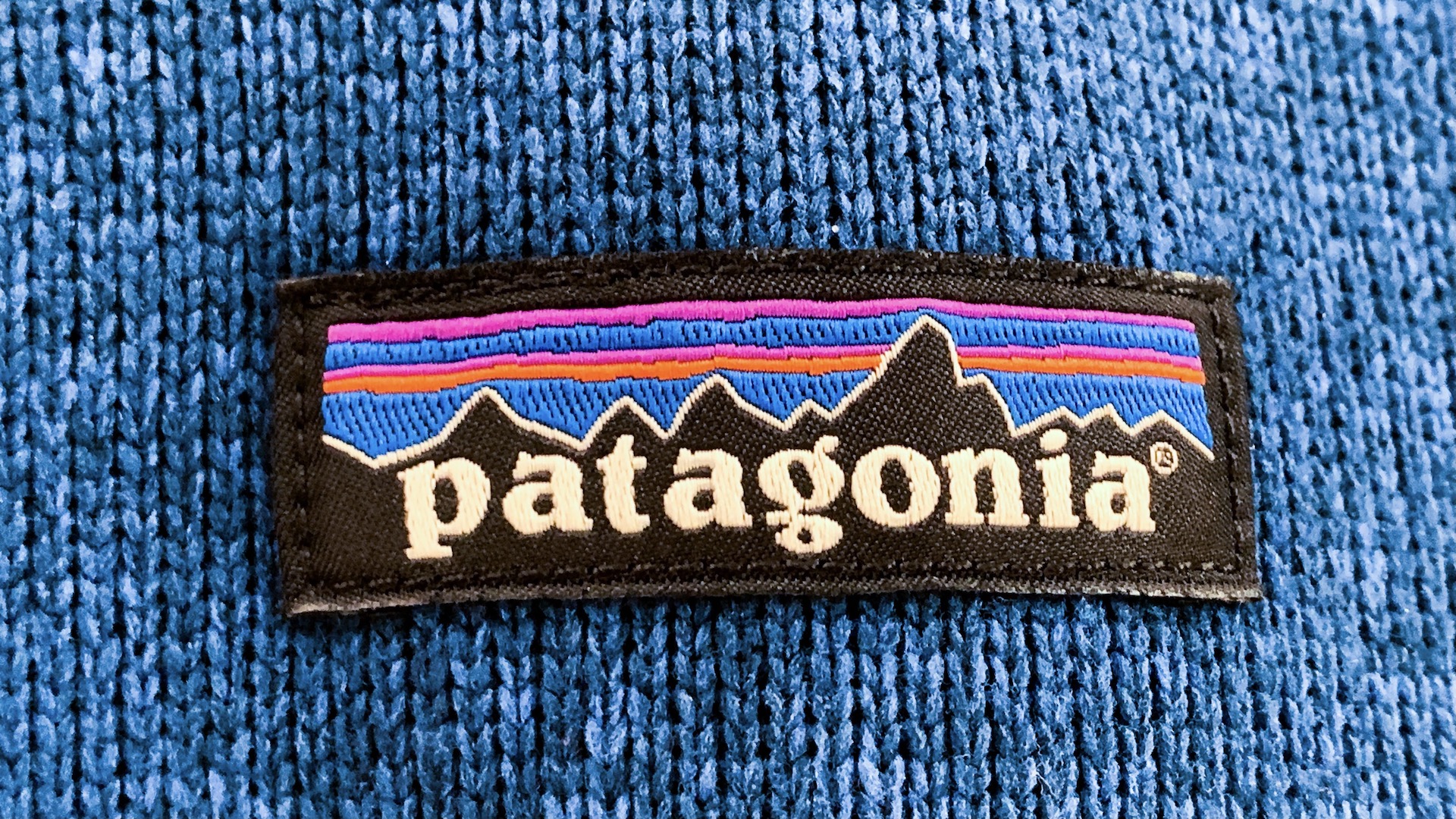Patagonia vs Arc’teryx: the two outdoor gear brands compared head-to-head
Not sure where to get your gear? We take a closer look at the differences and similarities of the two popular outdoor clothing companies

Given the choice, would you pick outdoor apparel by Patagonia or Arc’teryx? And what do you make a decision based on? Is it fit, color, price, availability and previous experience? Or do ethical and environmental concerns play a more important role in what you choose to buy?
We take a closer look at the two leading companies that sell a range of clothing and equipment for outdoor activities, such as hiking, trail running, climbing and skiing.
Patagonia vs Arc’teryx: what they sell
Patagonia has six clothing collections based on different activity areas, including trail running, mountain biking, surfing, climbing, snow and fly fishing. There are ranges for men and women.
The clothing includes jackets, such as the Men’s Hi-Loft Down Hoody, pants, baselayers, socks, underwear, wetsuits, t-shirts, hats, and gloves, among many others.
The on-line store also sells kids and baby outdoor wear, as well as workwear clothes, sleeping bags and books. What’s noticeable is there are no specific collections of hiking or walking apparel, although many items would serve walkers well, and nor do Patagonia sell footwear.
A look at the Arc’teryx retail offering and you see clothing, rucksacks, including the Brize 25, footwear, such as the Norvan LD 3 road to trail running shoes, and other items, including harnesses and chalk bags for climbing. The collections are aimed at men or women.
Activity categories include hiking and trekking, alpine and rock climbing, skiing and snowboarding, trail running and “everyday”, which extends to lifestyle or casual items.
All the latest inspiration, tips and guides to help you plan your next Advnture!
So, in terms of what is on offer for sale for outdoors fans, the collections from Patagonia and Arc’teryx seem fairly similar on the face of it. But, as you will discover there are many differences between the brands.

History of Patagonia vs Arc'teryx
Let’s take a look at the history of both brands to see if there are any major differences.

History of Arc’teryx
Arc'teryx has an HQ in North Vancouver, Canada. The origins of the company's name and logo is the archaeopteryx, which is a genus of bird-like dinosaur.
Arc'teryx started life as a company called Rock Solid in 1989, and re-branded in 1991 to become a producer of outdoors and climbing clothing and gear. The company was then sold to Salomon Group in 2001 before being bought by Amer Sports in 2005 and re-structured under ANTA Sports in 2019.

History of Patagonia
Patagonia has its roots in one person, who is still the name connected with the company: Yvon Chouinard. He was 14 in 1953 when he discovered a love of rock climbing. Five years later, he taught himself blacksmithing and began to make climbing pitons so he could climb in Yosemite.
In 1965, Chouinard got together with Tom Frost to launch Chouinard Equipment. Over the next decade, it became the US’s largest supplier of rock climbing gear.
It was at this point that Chouinard became more aware of the environmental impact of outdoor activities, especially as he realised his iron pitons were causing damage to the structure of the rocks. This led to another invention, an aluminum chock, instead of an iron piton.
Patagonia came next, and Chouinard founded the company in Ventura, California, in 1973. Chouinard Equipment was sold off and became Black Diamond Equipment.

Green credentials: Patagonia versus Arc’teryx
A major part of Patagonia's ethos is a focus on the ethics of the workforce, as well as concern for the environment, and in September 2022, Chouinard revealed that future profits will go to “save our home planet”.
Patagonia has donated 2% of all stock and all decision-making authority to a trust, which oversees the company’s mission and values. The other 98% of the company’s stock goes to a non-profit called the Holdfast Collective.
Patagonia remains a private for-profit company, but any profits not reinvested in the business will be distributed by the collective to environmental causes.
A closer look at Patagonia’s products reveals many recycled materials, with more than half fabrics being certified bluesign, while all of its cotton is certified by the Global Organic Textile Standard.
The brand also has a Worn Wear scheme that discourages customers from always buying new clothes, and offers a free repair and reuse service. Products that are returned but unwanted are repaired and resold as second-hand, or recycled so as to minimize landfill waste.
There is also a campaign called Patagonia Action Works, which aims to educate the public about conservation and supports other organisations that are working towards the same goals.
In addition, Patagonia has strong ethical concerns and pledges that show they care about the lives and livelihood of the people who manufacture their products. To this end, Patagonias is Fair Trade Certified™.
Patagonia is also a B-Corp, which means employees, communities and the environment rank alongside shareholders in the decision-making processes.
Meanwhile, Arc’teryx also makes a host of sustainability claim and commitments. The company was an early signatory to the UN Fashion Industry Charter for Climate Action; a member of the Outdoor Industry Association’s Climate Action Corps; a co-founder alongside the Pembina Institute of the Catalyst Business Coalition; and one of the first 400 companies to set a verified Science Based Target.
Arc’teryx also reports it is aiming to meet target of the international treaty on climate change, the Paris Agreement .
The brand recognises that the “most sustainable purchase is no purchase”. Next best, they suggest, is to purchase from the company’s dedicated pre-loved ReGEAR site. And if you are going to purchase something new, Arc’teryx aims to sell a product that will perform “season after season”.
The website states: “Durability and performance have been our guiding principles from the outset.” The premise is that the longer a garment lasts the less climate-changing impact its overall manufacture will have and, also, it won’t need to be replaced.
The company also has a dedicated ReBird hub, described as a place where “initiatives bring circularity to life”.

What the eco watchdogs say
Ethical consumer watchdog, Good On You has assessed a number of outdoor companies on environmental issues, as well as ethics. These include Patagonia and Arc’teryx.
Good On You has given Patagonia a 'good' overall rating. It reports: “Patagonia uses eco-friendly materials and has good policies to monitor suppliers in its supply chain.” The brand is given 4/5 for planet, people and animals. Read more if you are interested in the eco assessment.
Meanwhile, Arc’teryx receives a 'not good enough' rating. Good On You reports: “Arc'teryx is not taking adequate steps to reduce textile waste in its supply chain.” It gives 2/5 for being planet friendly and 3/5 for concerns about people and animals. It’s worth reading more.
Let’s compare: product for product
It’s interesting to take a look at a product sold by both brands, for example a waterproof jacket for activities such as hiking.
The first impression is that Arc'teryx offers a range of more technical jackets, compared to Patagonia, while Patagonia focuses on – and emphasises – the environment benefits of its products more than Arc'teryx.
An Arc’teryx technical jacket classic, the BETA AR, weighs on average 455g and costs £500. It is a created with Gore-Tex Pro shell fabric. Find out more about Gore-Tex Pro shell, although it’s also worth reading about Gore-Tex and the use of perfluorochemicals (PCRs).
Arc’teryx emphasises various features of the jacket, including its packability and durability. The jacket also has a helmet-compatible hood with an internal collar for added protection and an embedded RECCO reflector to improve searchability in emergency situations.
It also has a DWR (durable water repellent) finish. Since there is nothing to say it is PCR-free, we assume it does contain PCRs, which have been shown to be harmful to the environment, people and animals. However, on the environmental front, the jacket contains materials that meet the bluesign criteria.
In contrast, a waterproof jacket made by Patagonia, the Torrentshell 3L, appears to be made with far greater emphasis on pro-environment factors.
The jacket's main component is the brand’s own three-layer H2No Performance Standard technology fabric for waterproof/breathable performance. It has a list price of £170, and the average weight is 394g.
Features include 100% recycled waterproof and breathable face fabric, adjustable hood, microfleece-lined neck, centre front zip, two handwarmer pockets and venting pit zips with welted exterior storm flaps and zippers with a DWR finish.
Sustainable claims from Patagonia state that 68% of its fabrics are made with recycled materials, and products are Fair Trade sewn and bluesign certified.
Patagonia goes a step further to offer environmental transparency. The company reports they do use fluorinated DWR (durable water repellent) finishes, which contain environmentally harmful components. Patagonia says they are aiming to find alternatives for the future.
Again, they are also transparent about polyurethane use. The brand states: “The aim is to reduce the use and aim for more bio-based polyurethanes."
It's your choice: Patagonia vs Arc’teryx
What brand you choose will be personal. For some, it's price, color, looks and previous experience. Increasingly, consumers are demanding more environmental awareness and this applies to outdoor apparel companies, too.
Patagonia is a well-known outdoor industry leader in environmental and ethical concerns, although it admits it still has issues to address. Meanwhile, Arc'teryx claims it is aiming to be greener.
- Best waterproof jacket: stay warm and dry in the harshest weather

Fiona Russell is a widely published adventure journalist and blogger, better known as Fiona Outdoors. She is based in Scotland and is an all-round outdoors enthusiast with favorite activities including trail running, mountain walking, mountain biking, road cycling, triathlon and skiing (both downhill and backcountry). Aside from her own adventures, Fiona's biggest aim is to inspire others to enjoy getting outside and exploring, especially through her writing. She is also rarely seen without a running skort! Find out more at Fiona Outdoors.
